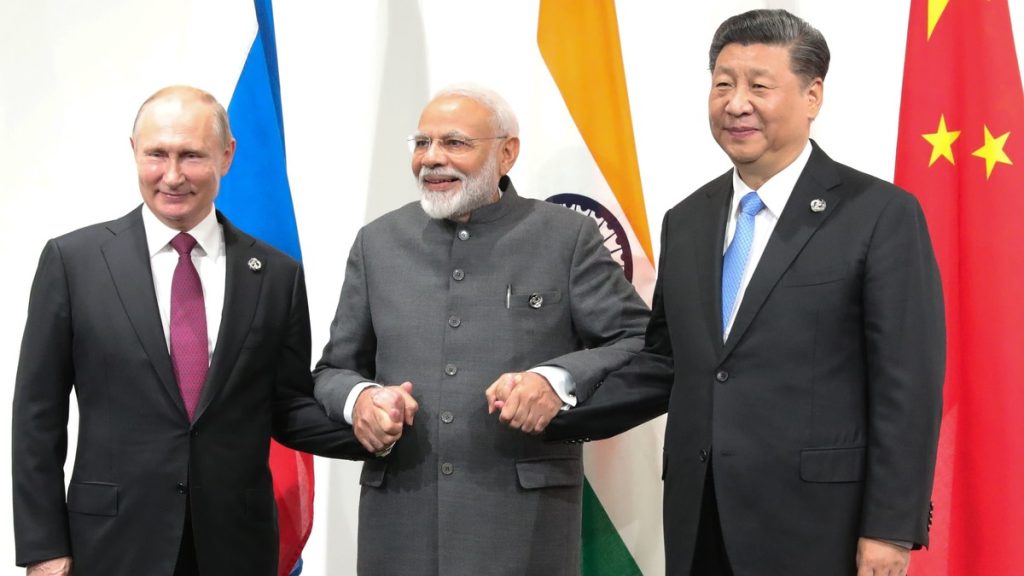The Asia-Pacific region, home to some of the world’s largest and most dynamic economies, has become a crucial driver of global economic activity. Over the past few decades, this region has undergone profound economic transformations, with many countries experiencing rapid growth and development. The region’s economic shifts not only reshape local markets but also have far-reaching consequences for global economies, influencing everything from capital flows to trade dynamics. This article explores how economic transformations in the Asia-Pacific affect global economies, how growth in emerging markets influences global capital flows, and how investors can seize opportunities arising from Asia’s economic growth while managing associated risks.
Analyzing How Economic Transformations in Asia-Pacific Affect Global Economies
The economic transformation of the Asia-Pacific region has been one of the most remarkable global developments of the past century. From the rise of China and India to the rapid industrialization of Southeast Asian economies, the region’s growing importance in the global economy cannot be overstated. Several key factors contribute to these transformations, and their impact is felt not only within the region but across the world.
- Shifts in Trade Patterns
Asia-Pacific has seen a dramatic increase in its trade activity, particularly in the context of the rise of China, Japan, and India. These countries are now major global players, with China becoming the world’s second-largest economy and the largest exporter. Trade patterns have shifted, with much of the world’s manufacturing, consumer goods, and technology now sourced from the region. This shift has led to significant changes in the global supply chain. Countries in the Asia-Pacific region, especially China, are integral to the production of goods that fuel global consumption. The region’s increased involvement in global trade has not only changed the flow of goods but also altered the dynamics of global manufacturing and consumption. As Asia grows as a consumer of goods, it increasingly influences the demand for raw materials, machinery, and technology, thus impacting global markets. - The Rise of Emerging Economies
The Asia-Pacific region is home to some of the world’s most rapidly growing economies, particularly in Southeast Asia, South Asia, and parts of East Asia. These emerging economies are reshaping the global economic landscape by contributing to global growth at an unprecedented rate. Countries like India, Indonesia, and Vietnam have become engines of growth, attracting both domestic and foreign investment due to their youthful populations, improving infrastructure, and burgeoning middle classes. As these emerging markets grow, they provide new opportunities for global businesses and investors. Their growing demand for products and services, combined with their increasing integration into the global economy, offers immense potential for companies and investors. The increasing middle-class population in these regions is expected to boost consumption significantly, making the Asia-Pacific an essential region for businesses looking to expand their markets. - The Role of Asia-Pacific in Global Supply Chains
Over the past few decades, the Asia-Pacific region has become the global manufacturing hub, with countries like China, South Korea, and Taiwan playing pivotal roles in the production of everything from electronics to textiles. The region’s ability to leverage lower labor costs, manufacturing efficiency, and economies of scale has made it a dominant player in global supply chains. With the increasing importance of supply chains in a globalized economy, any disruptions within the Asia-Pacific region—such as natural disasters, geopolitical tensions, or policy changes—can have ripple effects throughout the world. As a result, companies and investors must pay close attention to Asia-Pacific’s economic transformations to mitigate risks and take advantage of new opportunities in global supply chains. - The Influence of Asia-Pacific on Global Energy Markets
Asia-Pacific is also a critical player in global energy markets, particularly with its high demand for energy resources like oil, natural gas, and coal. China, as the world’s largest importer of oil, significantly influences global oil prices. Furthermore, the region’s growing focus on renewable energy—especially in countries like China and India—will continue to reshape global energy dynamics. The economic shifts in Asia-Pacific impact global energy markets not only in terms of demand for energy but also in the adoption of green technologies. The region’s commitment to renewable energy is becoming more pronounced, as evidenced by large-scale projects in solar and wind energy, particularly in China. This shift towards cleaner energy solutions has implications for global energy markets and investors, presenting new opportunities and challenges in the energy sector.

How Growth in Emerging Markets Influences Global Capital Flows
The rapid growth of emerging markets in the Asia-Pacific region has had profound implications for global capital flows. As these economies expand and develop, they attract increasing amounts of foreign direct investment (FDI), portfolio investments, and capital inflows, making them crucial to global financial markets. The dynamics of capital flows to and from these emerging economies are influenced by several factors.
- Foreign Direct Investment (FDI) into Asia-Pacific
The Asia-Pacific region has become a major recipient of FDI, as foreign companies seek to capitalize on the region’s growing consumer markets, cheap labor, and expanding infrastructure. In particular, China and India have received significant amounts of FDI in sectors like technology, manufacturing, and finance. Southeast Asia, with its rapidly growing economies, has also attracted substantial foreign investment in industries such as electronics, automotive, and consumer goods. FDI flows into Asia-Pacific create an interconnected global economy where Asia’s growth has direct implications for investor returns worldwide. As these investments increase, they fuel further economic development in the region, creating a positive feedback loop that benefits both local economies and global investors. Investors are increasingly focused on Asia-Pacific’s growth, as the returns from emerging markets are often higher than in more mature markets. - Capital Outflows from Asia-Pacific
In addition to attracting foreign investment, Asia-Pacific is also seeing increasing capital outflows. As regional economies grow wealthier, high-net-worth individuals and institutional investors in the region are looking for investment opportunities outside their borders. Chinese investors, for example, have been increasingly diversifying their portfolios by investing in international real estate, equities, and bonds. Capital outflows from Asia-Pacific have significant implications for global financial markets. For instance, Chinese capital flows have been particularly important in global real estate markets, with Chinese investors acquiring assets in cities like New York, London, and Sydney. This has led to increased competition for assets and rising property prices in these global cities, illustrating the interconnectedness of Asia-Pacific’s economic growth and global capital markets. - Global Trade and Investment Networks
The increasing economic integration of Asia-Pacific economies into the global trade and investment networks has led to a surge in cross-border financial flows. The growth of trade between Asia-Pacific and the rest of the world has led to a higher demand for international capital, which is required to finance infrastructure projects, expand trade, and develop new industries. This interconnectedness has also led to increased integration between global capital markets, with Asia-Pacific investors diversifying their portfolios internationally and foreign investors taking positions in Asia-Pacific assets. The Asia-Pacific region’s growth has led to the rise of regional financial hubs such as Hong Kong, Singapore, and Tokyo, which serve as centers for capital flow and investment. The development of these financial centers has increased the region’s influence on global financial markets, making Asia-Pacific a critical area for capital allocation and risk management. - The Role of Central Banks and Monetary Policy
The monetary policies of major Asia-Pacific economies, particularly China, Japan, and India, play a crucial role in shaping global capital flows. For example, the People’s Bank of China (PBOC) has been actively engaged in influencing the yuan’s exchange rate, which can affect capital flows in and out of the country. Similarly, Japan’s low-interest-rate policies have had a significant impact on global bond markets and the flow of capital in search of higher yields. Central banks in the Asia-Pacific region are also playing an increasingly important role in global economic stability. Their decisions regarding interest rates, quantitative easing, and currency stabilization directly impact the flow of capital across borders and can have widespread effects on global financial markets. Investors need to closely monitor the actions of these central banks to understand the risks and opportunities in the global capital markets.
How Investors Can Seize Opportunities in Asia’s Economic Growth While Managing Risks
As the Asia-Pacific region continues to grow and evolve, it presents investors with numerous opportunities for capital appreciation, diversification, and long-term gains. However, these opportunities also come with inherent risks, including geopolitical instability, currency volatility, and regulatory changes. Investors can manage these risks while seizing opportunities by adopting specific strategies.
- Focus on High-Growth Sectors
Investors should look for high-growth sectors in Asia-Pacific, such as technology, healthcare, and infrastructure. These sectors are likely to benefit the most from the ongoing economic transformation in the region. The rise of e-commerce, the expansion of renewable energy, and the demand for high-quality healthcare are just a few examples of industries that are expected to see significant growth in the coming years. Technology, in particular, is a key area of focus, with China, India, and other Asia-Pacific economies investing heavily in innovation. The development of AI, robotics, fintech, and renewable energy technologies presents opportunities for investors who can identify companies at the forefront of these trends. - Geographical Diversification
To mitigate the risks associated with individual countries or regions, investors should diversify their portfolios across multiple countries within the Asia-Pacific region. While China and India are obvious focal points, countries like Vietnam, Indonesia, and the Philippines are emerging as attractive destinations for investment due to their young populations and growing consumer markets. Diversifying across these economies can help investors reduce country-specific risks while capitalizing on regional growth. - Use of ETFs and Mutual Funds
Exchange-traded funds (ETFs) and mutual funds focused on Asia-Pacific markets provide an easy way for investors to gain exposure to the region without taking on the risks associated with individual stocks or bonds. These funds offer diversification across multiple sectors and countries, reducing exposure to any one market. By investing in regional ETFs or mutual funds, investors can access a broad array of opportunities in Asia-Pacific’s growing markets while managing risk more effectively. - Currency Hedging Strategies
As currency fluctuations can significantly affect the returns of international investments, investors should consider implementing currency hedging strategies when investing in Asia-Pacific markets. By using currency futures or options, investors can protect themselves from adverse currency movements and lock in favorable exchange rates. - Monitor Geopolitical Developments
Given the political volatility that can arise from trade disputes, government changes, and other factors, investors should closely monitor geopolitical developments in Asia-Pacific. Keeping abreast of political changes can help investors anticipate potential risks and adjust their strategies accordingly.
Conclusion
Asia-Pacific’s economic shifts are transforming the global economic landscape, with the region’s growth significantly influencing global trade, capital flows, and investment opportunities. The rise of emerging markets, the integration of Asia-Pacific economies into global supply chains, and the region’s impact on global energy markets all demonstrate the profound impact of Asia’s economic growth on the world. While this growth presents tremendous opportunities for investors, it also comes with risks that require careful management. By focusing on high-growth sectors, diversifying geographically, using ETFs and mutual funds, employing currency hedging strategies, and monitoring geopolitical developments, investors can successfully navigate the dynamic Asia-Pacific markets while maximizing returns.



































